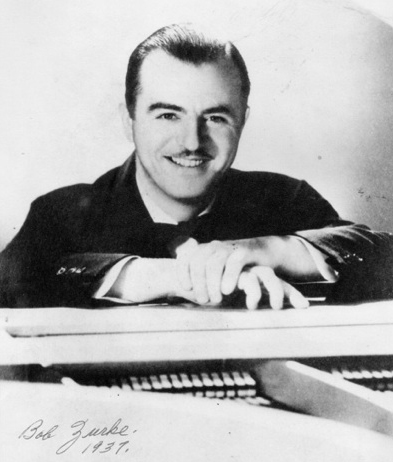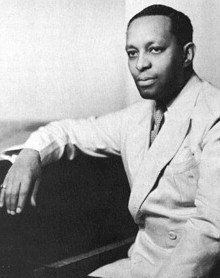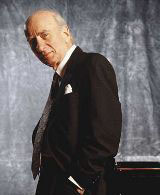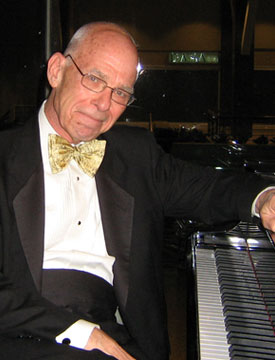Piano legend Dick Hyman and Jim Cullum Jazz Band pianist John Sheridan team up at the Sacramento Jazz Jubilee for a concert of selections by Rube Bloom, Willie "The Lion" Smith and Bob Zurke to celebrate their Arbors Records release of an album titled, Forgotten Dreams, containing many of the songs they perform on this broadcast.
Following is an excerpt from the liner notes for their Forgotten Dreams album, written by bandleader and cornetist Jim Cullum:
"These beautiful, often haunting piano pieces come to us like a forgotten dream we may struggle to recall. They were once at the center of American popular culture, but memories of this anomaly now barely flicker on a horizon blurred by the passing years.
"Gyrations in tastes and standards would make it seem impossible to predict down which avenue popular music might turn. But in 1921 it surged in a pleasing direction, for in that year the brilliant pianist Zez Confrey burst on the scene. Zez had several catchy piano compositions and everything else needed to grab the public's fancy. He was young, handsome--and even his first name was unique; musicians would quip, "Zez who?" Soon, his portrait was adorning hundreds of thousands of copies of sheet music, and Zez was famous and wealthy.

Zez Confrey novelty piano sheet music, 1921. Image courtesy University of Indiana.
"Throughout the 1920s and 30s many others followed in Confrey's wake. The new genre became known as 'Novelty Ragtime' or 'Novelty Piano.' A wide variety of piano music was placed in this category, for as time went along, the label 'Novelty Piano' was applied, often loosely and often just to keep the craze alive.
"This new music was like Ragtime in that it was intended to be played straight through as written, and, while it easily qualified as popular music, it had no lyrics and was not intended to be sung. Most importantly, Novelty Piano music was filled with individualistic piano "licks" that happened to fall easily under the fingers of the pianists who had created them. Usually this involved tricky rhythms and pianistic technical devices such as sliding the fingers from black to white keys. It was all intended to be attention getting, so in this aspect, the 'Novelty' name was a fit.

Zez Confrey. Image courtesy wikimedia.
"Fanning the flames of the huge success of Novelty Piano was the overall popularity of the piano in America at the time. During the early 20th century, pianos were everywhere— in almost every home and in many public places. Millions of amateur pianists went at it. The piano brought life to the staid American parlor where it had no competition as the family entertainment center.
"The program presented here fascinates me in two ways: often it evokes an emotional mood, a romance that is dreamlike. This emotional connection is much of what music is about—one may step inside the head and heart of the composer or performer. Secondly, this is a performance marked by craftsmanship.
"Our craftsmen are veteran sages who have been drawn together over and over to perform duo piano programs, and their abilities to play two pianos as one have been steadily refined over a period of twenty years. Dick Hyman, the consummate musician, composer, historian—and always the pianist—is clearly dedicated to what he can do with a piano. Throughout his life, Dick has had a passion to play the piano many hours every day, one way or the other.
"His friend and protégé, John Sheridan, holds a similar hand of cards. John's capacity for detail and variation and memory seem endless. He is a kind of genius, as is Hyman.
"Individually, both Hyman and Sheridan are famous in a world of musicians and careful listeners who are captivated and, in some ways, even addicted to early 20th- century American music. Many so inspired, see this music as powerfully compelling and spiritual. It drives them through life and often controls their decisions. Revered by this group of aficionados, Hyman and Sheridan are also a part of it."
The Program
"Willie "The Lion" Smith was one of the greatest Harlem stride pianists. Here on the well-known "Echo of Spring," Dick Hyman and John Sheridan bring Smith's music back to life with gusto.
"Through the mists, as in a dream, appear four pieces, "Spring Fever," "Soliloquy," "Southern Charms" and "Aunt Jemima's Birthday," all by the creative pianist Rube Bloom, who was a contemporary of Bix Beiderbecke. Like all the rest, he was a bit under Bix's spell. Bloom recorded with Beiderbecke in 1924 and went on to a New York career working with the cream of the white jazz musicians of the 1920s. As Bloom went along, he turned out a series of magnificent piano pieces.

Bob Zurke publicity photo, 1937.
"Swing Era star Bob Zurke burned his bright candle at both ends and died young. Again, his hot style was a result of the way the keyboard fell under his short, stubby fingers. Unable to reach intervals of a 10th, so often used in the bass figures of other pianists, Zurke developed active Bach-like bass lines that often moved opposite the direction of his right-hand melodies. Hyman and Sheridan present Zurke's "Lace Embroidery," "Hobson Street Blues," "Southern Exposure" and "The Eye Opener."
"Much of the music on this show is laced with a bittersweet flavor which will charm the listener, and while all selections are period pieces, all have, upon renewed listening, a freshness that is timeless."
Photo credit for home page teaser image: Willie "The Lion" Smith courtesy The Red Hot Jazz Archive
Text based on Riverwalk Jazz script by Margaret Moos Pick ©2003




